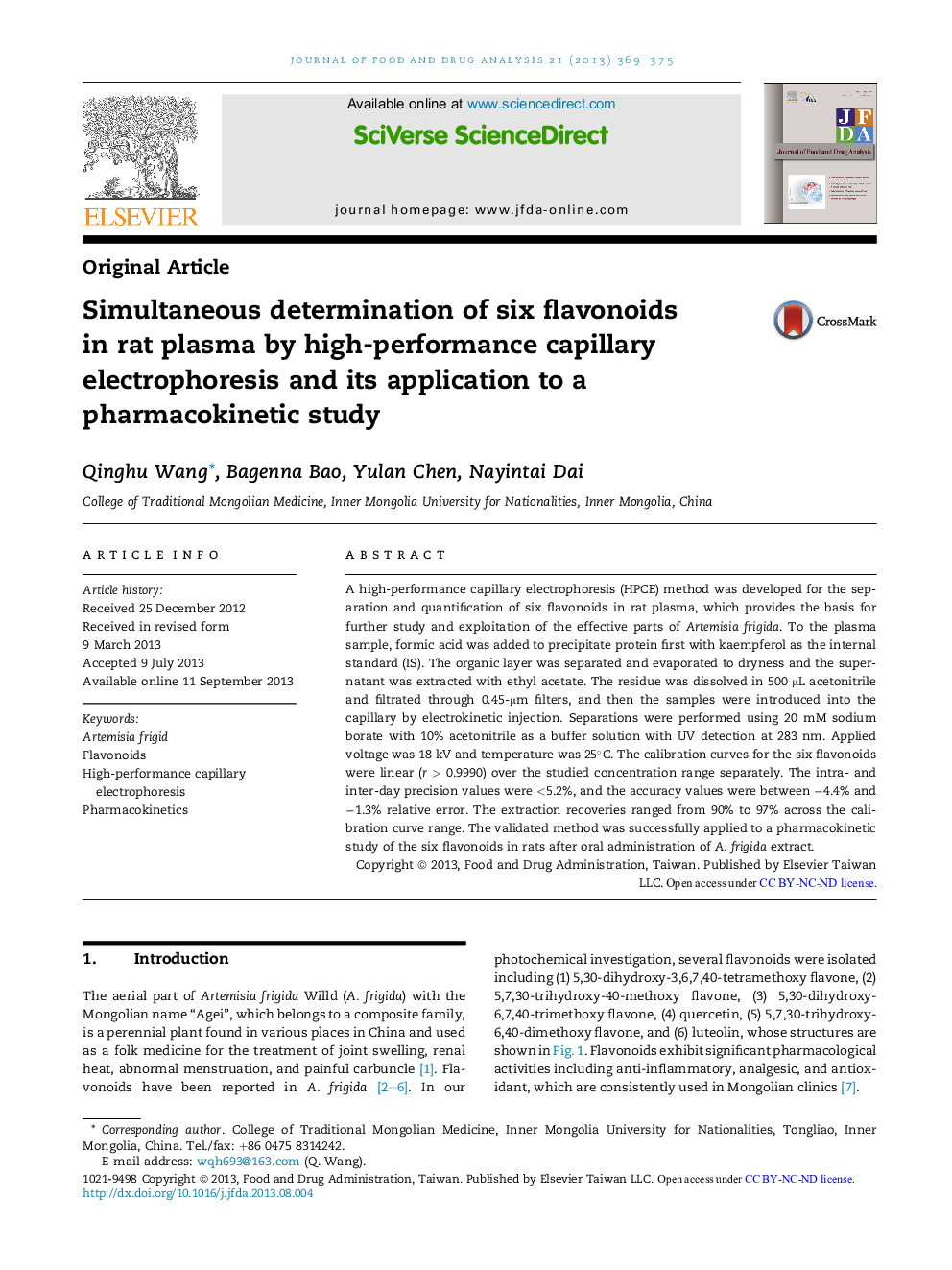| Article ID | Journal | Published Year | Pages | File Type |
|---|---|---|---|---|
| 2507574 | Journal of Food and Drug Analysis | 2013 | 7 Pages |
A high-performance capillary electrophoresis (HPCE) method was developed for the separation and quantification of six flavonoids in rat plasma, which provides the basis for further study and exploitation of the effective parts of Artemisia frigida. To the plasma sample, formic acid was added to precipitate protein first with kaempferol as the internal standard (IS). The organic layer was separated and evaporated to dryness and the supernatant was extracted with ethyl acetate. The residue was dissolved in 500 μL acetonitrile and filtrated through 0.45-μm filters, and then the samples were introduced into the capillary by electrokinetic injection. Separations were performed using 20 mM sodium borate with 10% acetonitrile as a buffer solution with UV detection at 283 nm. Applied voltage was 18 kV and temperature was 25°C. The calibration curves for the six flavonoids were linear (r > 0.9990) over the studied concentration range separately. The intra- and inter-day precision values were <5.2%, and the accuracy values were between −4.4% and −1.3% relative error. The extraction recoveries ranged from 90% to 97% across the calibration curve range. The validated method was successfully applied to a pharmacokinetic study of the six flavonoids in rats after oral administration of A. frigida extract.
